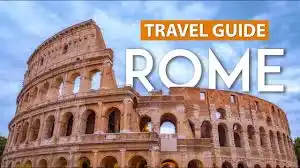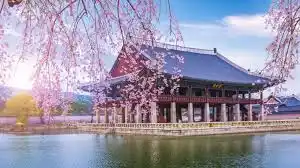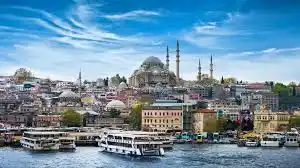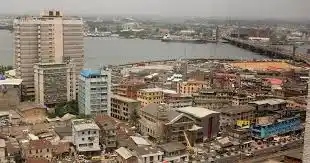Cultural things to do in Rome
Nestled amidst the timeless beauty of Italy, Rome stands as a captivating testament to the enduring cultural richness that has woven itself into the tapestry of human history.
As the eternal city, Rome’s cobblestone streets bear witness to over two millennia of civilization, where the whispers of emperors, poets, and artists still echo in every corner.
Stepping onto its sun-drenched piazzas and wandering through its labyrinthine alleys, one is transported through time, encountering a harmonious blend of ancient marvels and contemporary vitality.
In this article, we delve into the heart of the city’s cultural treasures, offering a detailed exploration of the myriad cultural things to do in Rome.
1. Explore the Colosseum
No visit to Rome is complete without experiencing the awe-inspiring grandeur of the Colosseum.
This iconic amphitheater, once the epicenter of gladiatorial combat, is a breathtaking testament to ancient engineering prowess.
Wander through its labyrinthine corridors, imagining the roars of the crowd and the valor of the combatants that once animated its stone walls.
2. Vatican Museums and St. Peter’s Basilica
Embark on a journey of artistic enlightenment at the Vatican Museums.
Home to an astonishing array of treasures collected by popes across centuries, the museums boast an unparalleled collection of art and artifacts.
The pièce de résistance, Michelangelo’s sublime frescoes in the Sistine Chapel, leaves visitors in awe.
Nearby, St. Peter’s Basilica stands as the epitome of Renaissance architecture and spiritual significance, drawing countless pilgrims and art aficionados.
3. Wander Through the Roman Forum
Step back in time to the heart of ancient Rome as you stroll through the Roman Forum. Amidst the ruins of temples, arches, and administrative buildings, one can almost hear the political debates and philosophical discussions that shaped Western thought.
4. Pantheon and Piazza Navona
The Pantheon, a marvel of Roman engineering, boasts an immense, open dome and a timeless sense of grandeur. Adjacent, Piazza Navona enchants with its Baroque fountains and lively atmosphere, serving as a hub for street artists and visitors alike.
5. Artistic Marvels at Galleria Borghese
Delight in the splendor of the Galleria Borghese, a gallery that houses a superb collection of art, including masterpieces by Caravaggio, Bernini, and Raphael. The villa’s lush gardens provide a tranquil escape from the urban hustle.
6. Trevi Fountain and Spanish Steps
Throw a coin into the Trevi Fountain to ensure your return to Rome, then ascend the Spanish Steps for a view that exemplifies the city’s romantic allure. These iconic sites capture the spirit of la dolce vita and remain must-see attractions.
7. Appian Way and Catacombs
Immerse yourself in history by walking along the ancient Appian Way, an important Roman road lined with ancient tombs. Explore the underground world of the Catacombs, where early Christians found solace in times of persecution.
8. Parks and Villas
Escape the urban buzz at Villa Borghese, a vast park offering art, gardens, and stunning vistas. Similarly, Villa Doria Pamphili beckons with its lush landscapes, creating a haven for relaxation and recreation.
9. Trastevere and its Bohemian Spirit
Cross the Tiber River to Trastevere, a neighborhood that exudes an artistic and bohemian vibe. Its narrow streets are adorned with ivy-clad buildings, charming squares, and a lively nightlife. This enclave of creativity has become a hub for local artisans, musicians, and writers.
10. Keats-Shelley House
Literary enthusiasts will find solace at the Keats-Shelley House, a museum dedicated to the Romantic poets John Keats and Percy Bysshe Shelley.
Situated at the foot of the Spanish Steps, this museum pays homage to the poets’ lives and works, offering a glimpse into the 19th-century literary scene.
11. Palatine Hill
Ascend Palatine Hill, where the emperors of ancient Rome once resided. The site offers panoramic views of the Roman Forum and the Circus Maximus, transporting visitors back to an era of opulence and imperial power.
12. Capitoline Museums
Explore the Capitoline Museums, the world’s oldest public museums, housing a splendid collection of classical art and artifacts.
Designed by Michelangelo, the museums’ grandeur complements their treasures, making it an excellent destination for history enthusiasts.
13. Cultural Events and Festivals
Immerse yourself in Rome’s vibrant cultural scene by attending events and festivals that celebrate its art, music, and traditions.
The Festa di Noantri, held in Trastevere, and the Estate Romana, a summer festival with music, dance, and theater, offer a glimpse into the city’s contemporary cultural fabric.
14. Exploring Markets and Gastronomy
Wander through local markets like Campo de’ Fiori and Mercato di Testaccio, where the sights and aromas of fresh produce, cheeses, and cured meats tantalize the senses. Indulge in Rome’s renowned cuisine, savoring pasta dishes, pizza, and gelato at local trattorias and eateries.
15. Architecture and Modernism
While Rome is famed for its ancient architecture, it also boasts a modernist architectural scene. The EUR district, planned during the fascist regime, showcases innovative designs and geometric forms, providing a contrast to the city’s historical landmarks.
16. Museo Nazionale Romano
This network of museums encompasses Palazzo Altemps, Palazzo Massimo alle Terme, Crypta Balbi, and the Baths of Diocletian. Together, they house an extensive collection of Roman art and artifacts that offer a glimpse into daily life, fashion, and artistic expression.
17. Music and Opera
Experience the passion of Italian opera at venues like Teatro dell’Opera di Roma. The city’s deep musical roots resonate through its performances, making attending an opera or classical concert a quintessential Roman experience.






